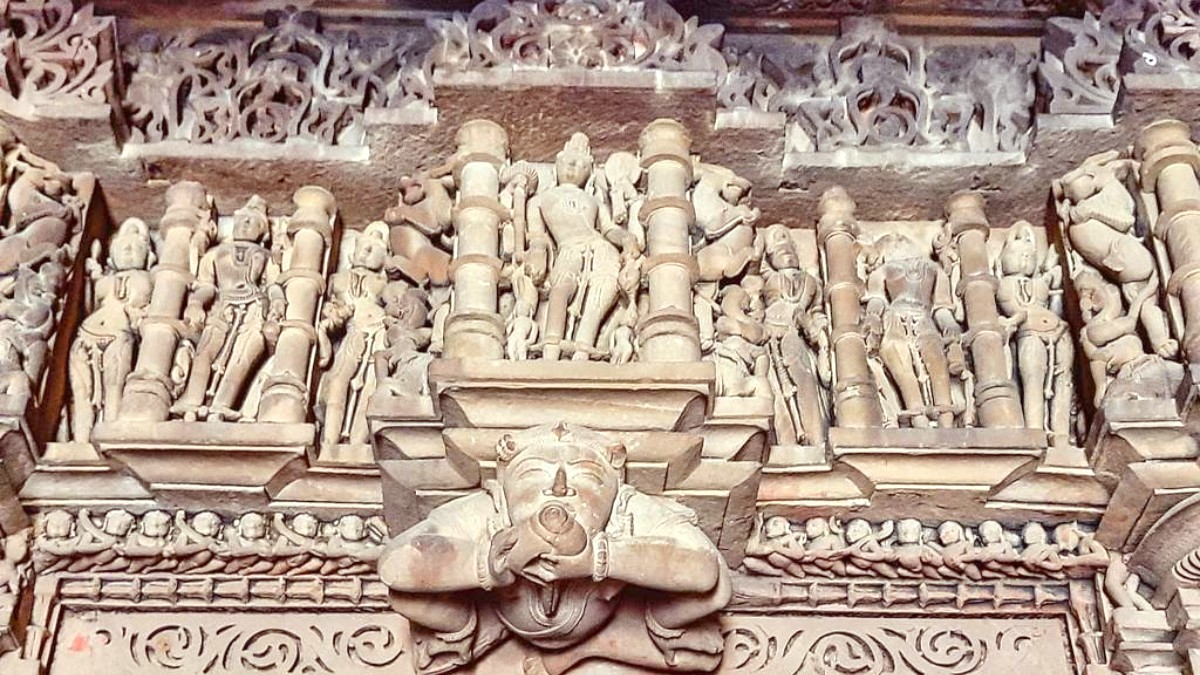
Madhya Pradesh And Chhattisgarh, India
The Western Group of Temples is the most significant and well-preserved collection. Built by the Chandela dynasty between 950 and 1050 AD, these temples have exquisite, often erotic sculptures, which portray a wide range of human emotions, daily life, and divine beings.
The Eastern and Southern Groups of Temples, located near Khajuraho village and further south respectively, are smaller but feature distinct artistic styles, including Hindu and Jain temples.
These groups offer distinct artistic styles and a more tranquil experience compared to the Western Group.
Largest and most ornate, dedicated to Lord Shiva. Epitomizes Chandela architecture with its intricate spires and profusion of sculptures.
Dedicated to Vishnu, remarkable for intricate friezes depicting scenes from daily life, battles, and mythological narratives.
Originally Vishnu, then Parvati, now Kali. Features impressive carvings on its exterior.
One of the oldest temples, dedicated to the 64 Yoginis. Stands in partial ruin but provides historical context.
Largest and finest Jain temple, featuring exquisite carvings that blend secular and religious themes.
Beyond the temples, Khajuraho offers museums, historical sites, and natural beauty.
Located near the Western Group. Houses sculptures and artifacts from the temple complex, understanding Chandela art and history.
Small local art shops around the temple area display and sell traditional paintings and crafts, depicting temple art.
The Light and Sound Show venue serves as the main cultural performance space, especially during the annual Khajuraho Dance Festival.
The Khajuraho temple complex itself forms the main archaeological site. Smaller ruined temples scatter the vicinity.
The entire temple complex forms a historical district, demonstrating the distinct Nagara style of Hindu temple architecture.
The Khajuraho temples are active places of worship, including the Matangeshwar Temple with its active Shiva lingam.
Archaeological Museum: 10:00 AM - 5:00 PM (closed Fridays). Entry Fee (Foreigners): ₹300.
The most significant annual cultural event. Features classical Indian dance against the illuminated Western Group temples (late Feb/early Mar).
Consider renting a bicycle for the Eastern and Southern Group of Temples. This allows self-paced discovery.
Khajuraho offers more than just temples; its natural surroundings provide opportunities for outdoor exploration.
Explore Khajuraho's natural surroundings and lesser-known sites.
The unique rock formations and colorful granite walls of Raneh Falls Canyon are a prominent geological feature, a striking contrast to the flat plains.
Engage with the region's diverse wildlife through organized safaris and boat trips.
A dedicated area for the conservation of gharials, a critically endangered crocodile species.
Venture beyond the most popular sites to discover Khajuraho's less-explored treasures.
Capture memorable images of Khajuraho's beauty.
Purchase from reputable stores or directly from artisans. This supports local craftsmanship and fair wages.
Bargaining is common in local markets. Do so respectfully and with a smile. Not applicable in fixed-price shops.
A major tiger reserve and wildlife sanctuary, a short drive from Khajuraho.
Book a SafariFamous for unique crystalline granite rocks. A spectacular natural sight, especially after monsoon.
Visit the FallsOffers boat rides on the Ken River to spot gharials and diverse birdlife.
Boat Trip DetailsAn emerging destination with impressive palaces, temples, and cenotaphs, about 170 km from Khajuraho.
Discover OrchhaRent a bicycle to explore the Eastern and Southern Group of Temples at your own pace.
Plan your visit to the Archaeological Museum for a historical context.
The Khajuraho Dance Festival is a highlight for cultural enthusiasts.
When purchasing souvenirs, buy from reputable stores or directly from artisans to support local craftsmanship.
Bargaining is common in local markets; negotiate respectfully.
Discover Khajuraho's less-explored treasures and local favorites.
The Khajuraho complex extends beyond the well-preserved Western, Eastern, and Southern groups.
Khajuraho's temples are not just historical monuments but also active places of worship.
Enjoy the tranquil green spaces around the temple complexes and nearby nature reserves.
Panna National Park, a major tiger reserve, offers expansive protected wilderness for wildlife viewing and jeep safaris.
Discover the region's unique geological formations and picturesque landscapes.
The canyon exhibits various shades of pink, red, and grey in its rock formations.
Experience wildlife in their natural riverine and forested habitats.
The Ken River is the main waterway, supporting Raneh Falls and the Ken Gharial Sanctuary for boat rides.
This beautiful historical town, about 170 km from Khajuraho, boasts impressive palaces and temples.
Features cenotaphs (chattris) from the Bundela Rajput dynasty, offering a contrasting historical experience.
Frequently combined with Khajuraho for visitors seeking more historical depth in the region.